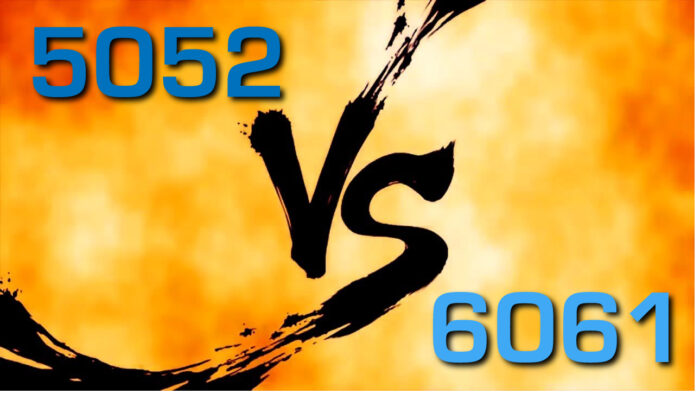5052 vs 6061 Aluminum: Who is the Light Heavyweight Champion?

In the world of aluminum, there are two major grades that we stock. 5052 and 6061. They are both -similar but have some unique differences that make the decision between grades very important depending on the application.
The three major factors that differentiate these two grades of aluminum are thickness availability, strength, and forming/machining capabilities. There are some similarities they both share as well, that make them excellent for various different unique applications.
Thickness
First and most obviously is the issue of thickness. 5052 is available up to roughly ½” thick and anything beyond that becomes very rare and difficult to source. Reasons for this will be explained later in the article. Conversely, 6061 is available in most thicknesses, but is mostly used in 1/8” thick or higher. These are what is most commonly seen in our applications, however, like most things in life, there are always exceptions to the rule.
Strength
The major reason one would choose 6061 over 5052 is strength. 6061 is structurally stronger than 5052. This is because, unlike 5052, 6061 aluminum is heat treatable. Commonly, you will see 6061 listed as 6061-T6, which is a heat treated 6061.
The Bend and the Brake
However, the strength of 6061 creates a downfall in other applications. While 6061 is structurally strong and very weldable is not recommended when braking or forming because it will frequently crack and have stress marks show.
5052 on the other hand has much higher elasticity than 6061 aluminum. Hence why it is generally more available in thinner sheets/light plate. While it cannot be heat treated, so its strength is not quick up to 6061, its no slouch. 5052 is regarded as the strongest of the non-heat treatable alloys.
Given this knowledge, its understandable why 6061 aluminum is more commonly used for machining. Whereas 5052 is more frequently applicable when working with sheet metal and welding applications.
Similarities
Much like most other metals, 5052 and 6061 are both excellent heat conductors, with 6061 just slightly edging out 5052. Both materials have excellent resistance to corrosion, which makes them great candidates for marine and nautical applications.
The strength to weight ratio of both products makes them great for both aerospace applications. 5052 and 6061 are commonly seen in various components on airplanes and helicopters. For the same reason they are also commonly used in various furniture, construction, and consumer goods applications as well.